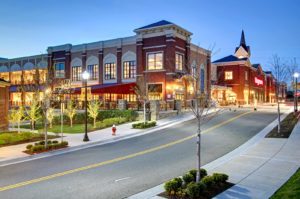 As businesses evolve in the digital era, it’s affecting their needs when it comes to physical space in commercial properties. Broker-owners of commercial firms should take note of three trends Transwestern recently highlighted in its first quarter Insights report covering the retail, industrial, and multifamily sectors.
As businesses evolve in the digital era, it’s affecting their needs when it comes to physical space in commercial properties. Broker-owners of commercial firms should take note of three trends Transwestern recently highlighted in its first quarter Insights report covering the retail, industrial, and multifamily sectors.
1. Retail: The Rise of Mobile Data
Retailers are getting more sophisticated in how they’re collecting mobile data about their customers. Many businesses are using mobile apps coupled with monitoring devices in their stores to track and interact with customers. If a consumer has that business’s app on their phone, it allows the retailers to engage with them by offering coupons or product suggestions. This personalized the shopping experience provides specialized data on consumer activity and interactions with the physical store location, according to Transwestern. This is influencing business owners’ location decisions and physical configuration needs at the storefront site.
2. Industrial: New Demands for E-Commerce Distribution Centers
Demands for faster shipments in online sales, and massive increases in e-commerce business is causing companies that have large fulfillment centers to rethink location. Previously, these online retailers chose industrial warehouses in lower cost areas outside of population centers. Today, there is a new demand for large commercial space closer to metro areas in order to more quickly and efficiently store and ship commodities to customers, according to Transwestern. These companies are seeking better access to various modes of transportation, such as trucks, rail, airfreight, and even seaports, So, real estate pros should identify sites with access to these amenities, as well as spaces that offer specific productivity and operation efficiencies that will help clients increase net operating income.
3. Multifamily: Micro-Unit Apartments in Urban Markets
As renters flock to urban centers for the live-work-play lifestyle, entry-level lease rates are becoming unaffordable for many recent college graduates, service workers, and young professionals, according to Transwestern. One way of providing more affordable living space is through micro-unit apartments. The Indie Apartments in Austin, Texas, for example, includes 138 apartments with 350-square-foot studios and 520-square-foot, two-bedroom units, and commercial restaurant space on the ground floor.
Recent Comments